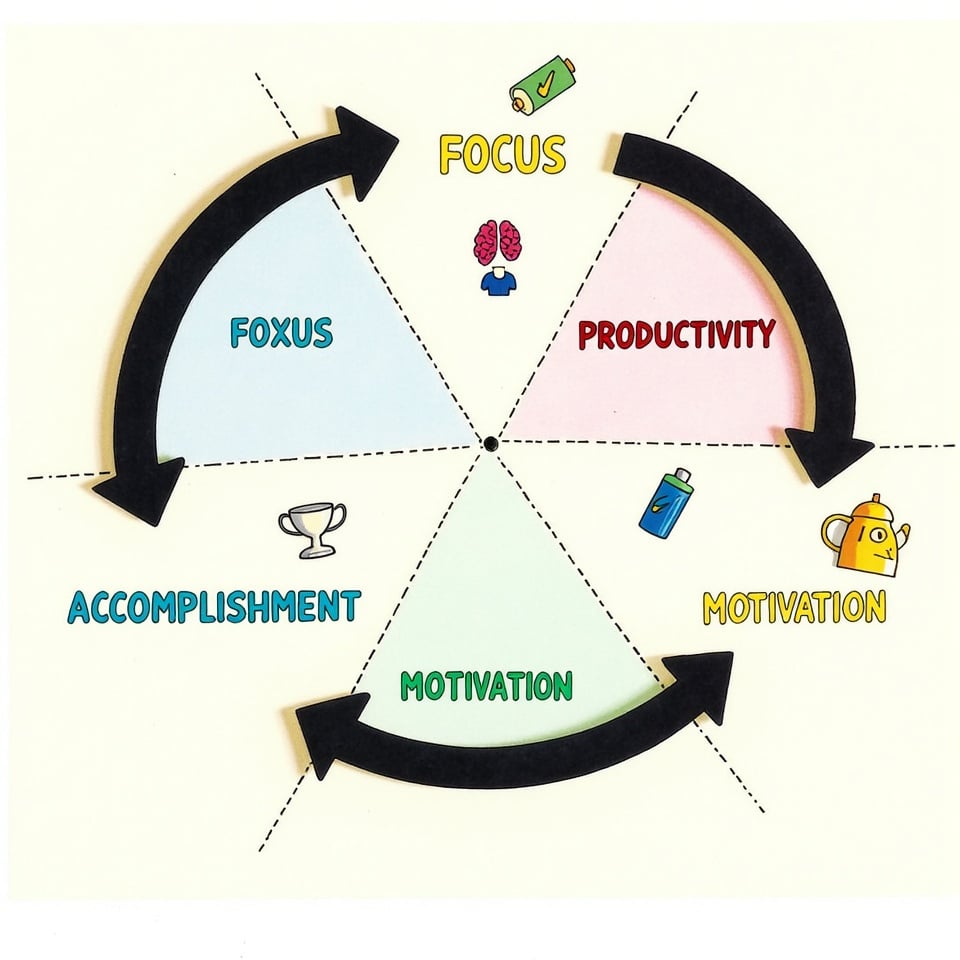Ever wondered if fast-tracking your project will save it—or crash it completely?
You’re not alone.
Project managers everywhere debate whether fast-tracking vs crashing is the better approach when deadlines loom.
The difference might seem subtle, but choosing wrong can cost you thousands (or even sink your project entirely).
In this guide, I’ll break down exactly when to use fast-tracking vs crashing, with real examples that show which strategy delivers better results.
Plus, you’ll discover the hidden costs most managers miss when making this critical decision.
Let’s dive in.
Schedule Compression in Project Management
Time is money in project management, and sometimes you need to deliver faster than planned.
That’s where schedule compression comes in – it’s your tactical approach to shortening project duration without changing the scope.
Think of schedule compression like pressing the fast-forward button on your project timeline.
It’s a strategic move project managers use when deadlines tighten or stakeholders need quicker results.
You’re essentially squeezing the same work into a shorter timeframe.
The Critical Path Method (CPM) plays a crucial role here.
By identifying the longest sequence of dependent activities, you can spot where compression might help most.
It’s like finding the bottlenecks in your project highway and clearing them strategically.
But why compress schedules? Sometimes market demands force your hand.
Other times, you might face contractual penalties or miss out on opportunities if you stick to the original timeline.
Schedule compression isn’t just about working faster.
It requires careful analysis of task dependencies and resource availability.
You’ll need to balance three key factors:
- Time reduction goals
- Available resources
- Quality requirements
Fast-tracking in Project Management
Fast-tracking is a schedule compression technique where you perform tasks in parallel that would normally run sequentially.
Think of it as building the walls while the foundation is still curing – you’re not waiting for one task to completely finish before starting another.
The core principle is simple: identify tasks with partial dependencies and overlap them strategically.
It’s like weaving multiple threads simultaneously instead of connecting them one after another.
This approach doesn’t typically add direct costs but requires careful coordination and risk management.
When to Implement Fast-tracking in Your Project Timeline
Fast-tracking works best when:
- You’re facing mild to moderate time pressures
- Tasks have flexible start-finish relationships
- Your team has strong communication channels
- Risk tolerance allows for some overlap
- You have experienced team members who can anticipate issues
Fast-tracking Examples in Different Industries
In construction, you might start interior design while exterior walls are being completed.
Software development teams often begin coding modules before the complete design is finalized.
Manufacturing plants frequently start component assembly while earlier parts are still in final testing.
I’ve seen marketing teams launch social media campaigns while their website is still under development.
It’s all about finding those sweet spots where parallel work makes sense.
Managing Task Dependencies During Fast-tracking
Success in fast-tracking hinges on managing dependencies smartly.
Here’s what you need to focus on:
- Clear communication channels between parallel teams
- Regular coordination meetings to catch potential conflicts
- Detailed documentation of task overlaps
- Quick decision-making processes
- Buffer time for unexpected issues
Remember, fast-tracking isn’t about rushing – it’s about smart sequencing.
Keep your eye on quality while you optimize your timeline.
Project Crashing in Project Management
Project crashing is the aggressive approach to schedule compression where you throw additional resources at critical path activities to reduce duration.
Unlike fast-tracking, crashing always involves increased costs – think overtime pay, extra equipment, or more staff.
The process involves analyzing your critical path tasks and determining which can be shortened with additional resources.
It’s like adding more builders to finish a house faster, but remember – nine women can’t make a baby in one month.
Some tasks just don’t crash efficiently.
Cost-Benefit Analysis for Effective Crashing Decisions
Every crashing decision needs careful financial evaluation:
- Calculate cost per day of acceleration
- Compare crash costs against delay penalties
- Identify tasks with the lowest crash cost per time unit
- Consider indirect costs like quality control
- Factor in potential overtime burnout rates
Resource Allocation Strategies in Crash Scheduling
Smart resource allocation makes or breaks your crashing efforts:
- Prioritize critical path activities
- Maintain skill-matching in new resources
- Balance workload to prevent burnout
- Keep some resources in reserve
- Monitor productivity levels closely
Common Reasons Project Managers Choose to Crash Schedules
Managers typically crash schedules when:
- Contractual deadlines are at risk
- Market opportunities demand faster completion
- Weather windows are closing
- Regulatory requirements change
- Stakeholder priorities shift unexpectedly
Remember, crashing is like using a turbocharger – it provides extra power but at a cost. Use it wisely and monitor its impact continuously.
Fast-tracking vs Crashing: A Comprehensive Comparison
When comparing schedule compression methods, it’s essential to understand how fast-tracking and crashing differ in their approach to saving time.
While both techniques aim to reduce project duration, they employ distinct strategies that impact resources, costs, and risks differently.
Key Differences Between Fast-tracking and Crashing Techniques
Fast-tracking and crashing are like two different gears in your project management transmission.
Fast-tracking rearranges tasks to run parallel, while crashing adds horsepower through extra resources.
Here’s what sets them apart:
- Fast-tracking focuses on schedule optimization without direct cost increase
- Crashing always involves additional resource costs
- Fast-tracking requires careful dependency management
- Crashing targets specific critical path activities
- Fast-tracking can be gradually implemented; crashing is more immediate
Cost Implications: Budget Impact of Each Approach
Fast-tracking typically maintains your original budget but may incur indirect costs:
- Coordination overhead
- Potential rework expenses
- Communication tools and systems
Crashing directly impacts your budget through:
- Overtime payments
- Additional equipment costs
- Extra personnel expenses
- Higher material costs for rushed delivery
Risk Assessment: Evaluating Potential Challenges
Fast-tracking risks include:
- Communication breakdowns
- Rework from dependency conflicts
- Quality issues from parallel work
- Resource scheduling conflicts
Crashing risks involve:
- Team burnout
- Diminishing returns
- Quality compromises
- Resource availability issues
Quality Control Considerations for Both Methods
Quality management differs significantly between approaches:
- Fast-tracking needs stronger coordination and review processes
- Crashing requires enhanced supervision of new resources
- Both methods need clear quality metrics
- Regular checkpoints become more critical
- Documentation must be more detailed
I’ve found success combining both methods strategically – fast-tracking where dependencies allow, and crashing when critical deadlines loom.
The key is knowing which tool fits your specific situation.
Best Practices to implement Fast-tracking Successfully
Implementing fast-tracking successfully starts with identifying which tasks can safely run in parallel without increasing project risks.
Let’s explore how to select and execute these overlapping activities effectively.
Identifying Tasks Suitable for Parallel Execution
Start by mapping your project dependencies carefully. Look for tasks with these characteristics:
- Minimal finish-to-start dependencies
- Different resource requirements
- Separate work areas or domains
- Independent decision points
- Clear handoff criteria
I once fast-tracked a website redesign by having content writers work alongside designers.
The key was identifying which sections could progress independently.
Managing Overlapping Activities Without Compromising Quality
Quality control in fast-tracking requires strategic oversight:
- Establish clear quality checkpoints
- Define handoff criteria between parallel teams
- Create buffer zones for potential rework
- Implement quick feedback loops
- Document assumptions and decisions promptly
Communication Strategies for Fast-tracked Projects
Clear communication becomes your lifeline:
- Daily standup meetings for parallel teams
- Shared project dashboards
- Real-time collaboration tools
- Clear escalation paths
- Regular stakeholder updates
Monitoring Performance Metrics During Fast-tracking
Track these key metrics religiously:
- Schedule performance index
- Quality metrics per deliverable
- Rework percentage
- Team velocity
- Dependency conflicts
- Resource utilization rates
Remember, successful fast-tracking is like conducting an orchestra – each section plays simultaneously, but timing and coordination are everything.
Regular monitoring helps you spot potential discord before it affects the entire performance.
Effective Project Crashing
Before diving into specific crashing strategies, project managers must first understand which critical path activities will yield the most significant time savings when crashed.
A careful analysis of task dependencies and resource availability guides smart crashing decisions.
Analyzing the Critical Path for Optimal Crashing Decisions
Start with a thorough critical path analysis:
- Identify activities with the most float
- Calculate crash cost per time unit
- Map dependencies between critical activities
- Evaluate resource availability
- Consider task complexity
I’ve found success by creating a crash priority matrix – ranking tasks by their crash cost versus time saved ratio.
This helps make informed decisions about where to invest additional resources.
Resource Optimization During Project Crashing
Smart resource management is crucial:
- Match skills to tasks precisely
- Consider learning curves for new team members
- Balance workload across teams
- Maintain resource buffers
- Track productivity metrics
Managing Extended Work Hours and Additional Resources
Handle increased work hours strategically:
- Rotate teams to prevent burnout
- Set clear overtime limits
- Monitor productivity trends
- Provide adequate breaks
- Ensure proper handoffs between shifts
I once managed a software launch where we crashed the testing phase.
The key was rotating QA teams every 8 hours to maintain sharp attention to detail.
Maintaining Stakeholder Expectations While Crashing
Keep stakeholders aligned through:
- Regular progress updates
- Clear cost implications
- Quality assurance reports
- Risk mitigation plans
- Realistic timeline projections
Remember, crashing is like running a sprint in a marathon – you need to manage energy levels and expectations carefully.
Be transparent about the trade-offs and keep stakeholders informed about both progress and challenges.
Pro tip: Create a daily dashboard showing crash costs versus schedule gains. This helps stakeholders understand the value they’re getting for the additional investment.
Risk Management in Schedule Compression
Schedule compression inherently introduces new risks to your project, making risk management a crucial component of any acceleration strategy.
Let’s examine how to identify and address potential pitfalls when implementing fast-tracking techniques.
Identifying and Mitigating Risks in Fast-tracking
Fast-tracking risks require proactive management:
- Map dependency conflicts early
- Identify communication bottlenecks
- Assess resource availability conflicts
- Monitor workflow overlaps
- Track technical dependencies
I’ve developed a “risk radar” approach – scanning for potential issues daily rather than waiting for problems to surface.
Early detection is your best defense.
Addressing Potential Quality Issues in Crashed Projects
Quality risks in crashed projects need special attention:
- Implement additional quality checkpoints
- Monitor new resource performance
- Track defect rates closely
- Document process variations
- Maintain standard operating procedures
Remember that time saved through crashing shouldn’t create quality debt. I once saw a construction project where rushed work led to costly rework – a perfect example of “haste makes waste.”
Contingency Planning for Schedule Compression
Build robust contingency plans:
- Identify backup resources
- Create alternative workflow paths
- Establish clear trigger points
- Maintain emergency funds
- Document fallback procedures
Think of contingency planning as your project’s insurance policy. You hope you won’t need it, but you’ll be glad it’s there if things go sideways.
Balancing Time Constraints with Project Scope
Maintain scope control through:
- Regular scope reviews
- Clear prioritization criteria
- Documented change processes
- Stakeholder alignment checks
- Impact assessments
Pro tip: Create a “scope vs. time” matrix to visualize trade-offs.
This helps teams make informed decisions about what to compress and what to preserve.
Remember, successful schedule compression is like walking a tightrope – you need the right balance of speed and stability. Too much focus on one can make you lose the other.
Tools for Schedule Compression Management
Modern project management tools make schedule compression more manageable and transparent.
Popular platforms like ClickUp and Asana offer specialized features for tracking parallel tasks and resource allocation.
These tools provide real-time visibility into project progress and potential bottlenecks.
Gantt charts remain essential for visualizing schedule compression.
They clearly show task dependencies, overlaps, and critical paths.
Tools like Wrike and Microsoft Project excel at displaying these relationships dynamically.
For resource management, platforms like Mastt and Resource Guru help optimize allocation during fast-tracking or crashing.
They track availability, skills, and utilization rates – crucial metrics for successful schedule compression.
Performance tracking tools should focus on key metrics:
- Earned Value Management (EVM)
- Schedule Performance Index (SPI)
- Resource utilization rates
- Quality metrics
- Cost variance
Wrapping it up
Fast-tracking and crashing are essential schedule compression techniques in modern project management.
While fast-tracking focuses on parallel execution, crashing emphasizes resource optimization.
Success depends on balancing time, cost, and quality while maintaining strong risk management practices.
Whether preparing for PMP certification or managing actual projects, understanding when and how to apply these techniques is crucial for effective project delivery.
Choose your compression method based on project constraints and available resources to achieve optimal results.







